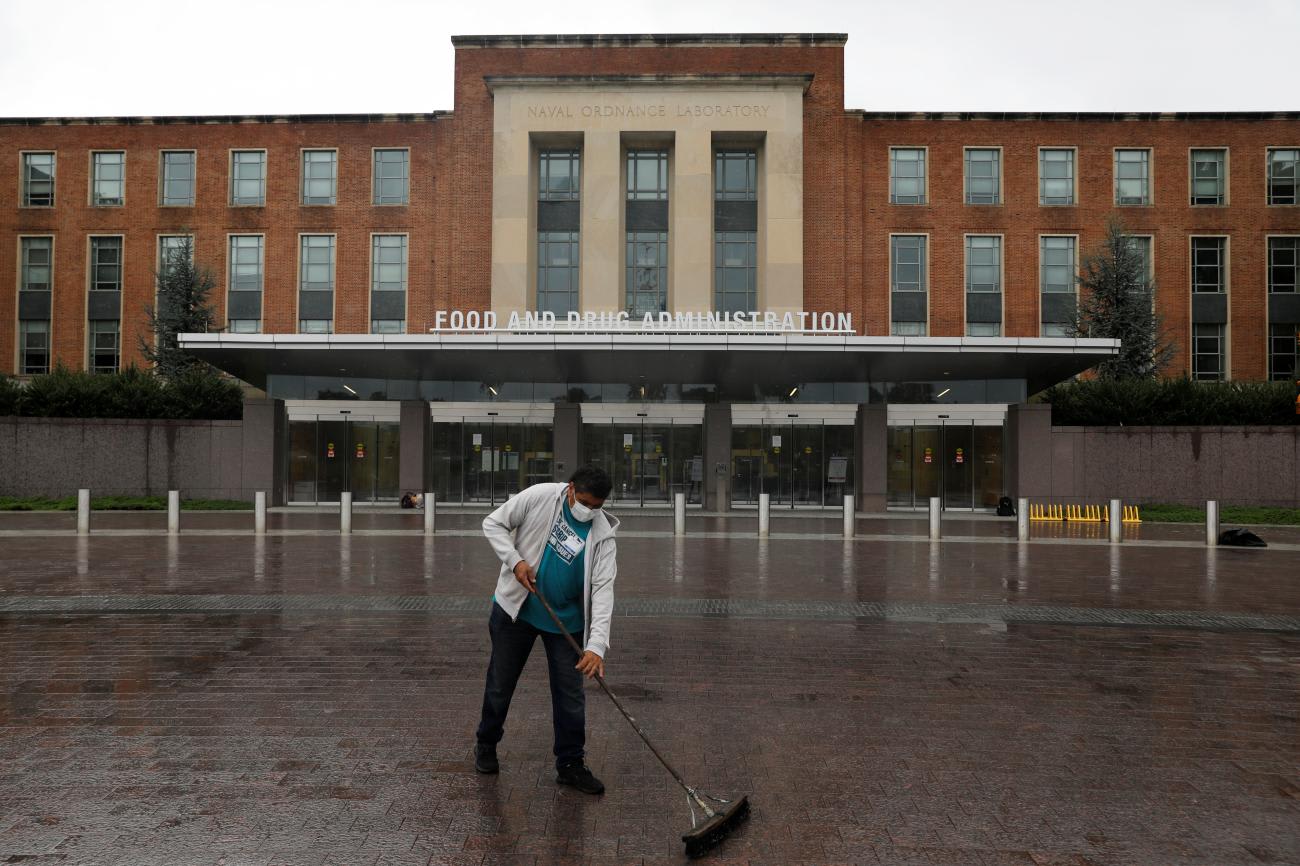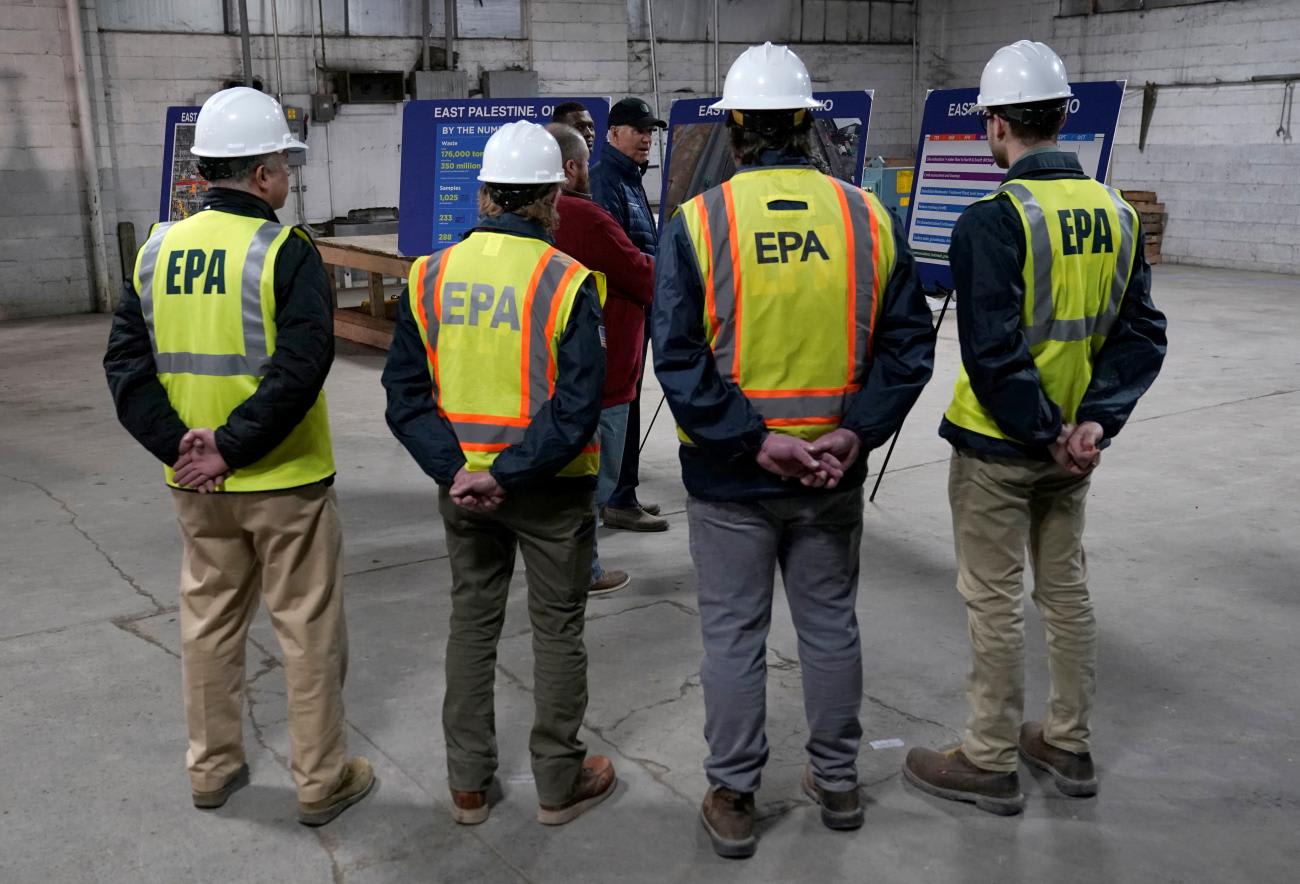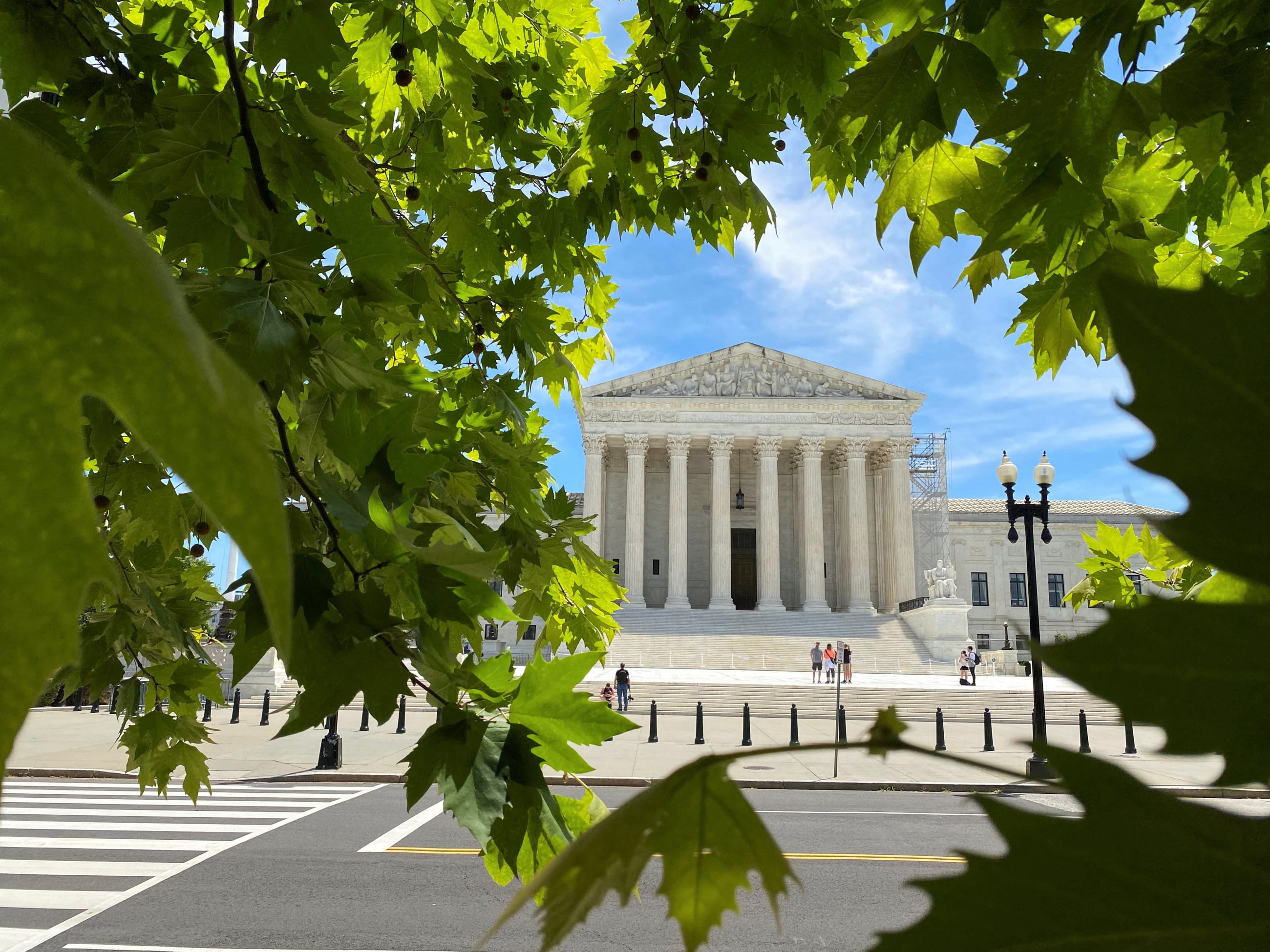On Friday, the U.S. Supreme Court (SCOTUS) ruled on a pair of cases that will have long-lasting implications for public health policy, potentially gutting—or at least substantially limiting—federal agencies' power to broadly interpret how to carry out laws related to clean air and water, health care, disaster preparedness and response, disease control during outbreaks, workplace safety, food and drug safety, and protections against discrimination over sexual orientation or transgender status.
The two cases—Loper Bright Enterprises v. Raimondo and Relentless, Inc. v. Department of Commerce—relate to fisheries regulation, but their details are less relevant than what's at their heart: the Chevron doctrine. Established in 1984, the Chevron doctrine holds that courts must defer to a regulatory agency's interpretation of ambiguous laws as long as the interpretation is reasonable.
Congress often passes laws directing agencies, such as the Centers for Disease Control and Prevention (CDC), Environmental Protection Agency (EPA), and Food and Drug Administration (FDA), to perform a specific function without spelling out all the details on execution. Those nitty gritty plans are left to the agencies themselves. The Chevron doctrine demanded that courts accept the way the agencies spell out those details as long as they're reasonable and not "arbitrary and capricious."
Legal experts agreed that the Supreme Court accepted the two cases explicitly to decide the fate of the Chevron doctrine, and the decision confirmed that. In a 6-3 decision, the conservative justices abolished Chevron deference.
"Chevron is overruled," Chief Justice John Roberts wrote for the majority. "Courts must exercise their independent judgment in deciding whether an agency has acted within its statutory authority." Calling the doctrine "fundamentally misguided," Roberts wrote that "All that remains of Chevron is a decaying husk with bold pretensions."
Legal experts diverged before the decision on what the impact on public health would be without Chevron. Some described catastrophic effects, such as the FDA's being stripped of its ability to determine the safety and effectiveness of drugs or even whether a new agent qualifies as a drug. Others acknowledged the potential for some impact, but nothing earth shattering to public health policy overall.
In a 6-3 decision, the conservative justices abolished Chevron deference
"Over the past two decades, the conservative legal movement has been coalesced around the desire to adopt a number of new doctrines that would rein in the administrative state, to make it harder for the administrative state to regulate, to affect private decisions," Nicholas Bagley, a professor at the University of Michigan who specializes in administrative law and health law, said in February during a virtual roundtable sponsored by the Council on Foreign Relations. "Part of that campaign is focused on getting rid of Chevron."
How the Chevron Doctrine Was Used
The Supreme Court itself has not invoked the Chevron doctrine since 2016, but lower courts use it frequently to decide whether federal agencies have the authority to set certain rules. During the COVID-19 pandemic, for example, more than 1,000 lawsuits challenged pandemic-related orders at the state and federal level, and Chevron often came into play in deciding these cases.
"The Chevron doctrine effectively gives a little bit of insulation to the executive branch to make hard choices, and that is especially important during a time of emergency," Bagley said. "Getting rid of Chevron doesn't eliminate your authority to operate pursuant to emergency statutes or to take aggressive actions to protect public health, but it would signal to the courts that they have a bigger role to play in checking the handiwork of public health agencies."
Experts, for multiple reasons, are divided on the potential ramifications of weakening Chevron in the public health sphere, Bagley said, but one of the biggest is that it's hard to tease out how often invoking Chevron actually makes a difference in a court's outcome. Given that agencies generally try to adopt reasonable interpretations in carrying out a statute, courts would often have come to the same conclusion anyway, making their citation of Chevron more of a ritual than a true deference to the agency.
How Much Does Another Strike Against Executive Power Matter?
Another reason for the discordance is that courts have already chipped away at executive power so much in recent years that it's unclear whether one more cut will make much difference. In many cases when the Supreme Court could have invoked Chevron, it instead invoked the major questions doctrine to take away agency authority.
The major questions doctrine holds that "certain decisions carry such enormous political and economic consequences that, unless Congress has clearly assigned the decision to an agency and expressly empowered that agency to act, that it is beyond the agency's power to do so," explained Sara Rosenbaum, a professor of health law and policy at George Washington University in Washington, DC. It was the doctrine invoked by a federal Florida judge, for example, to rule that the CDC did not have the authority to require passengers on airplanes to wear face masks.

Rosenbaum is among those who doesn't anticipate a major shock from losing Chevron "given that the major questions doctrine is already blowing up regulation after regulation," but she has some concerns.
Rosenbaum wrote earlier this year for the Commonwealth Fund about two scenarios in particular that could result from losing Chevron—scenarios that could now, with the doctrine cast aside, play out if cases are brought forth to do so.
First, the civil rights section of the Affordable Care Act prohibits discrimination on the basis of age, disability, race, national origin, color, or sex for "any health care program or activity" receiving federal funding. The current administration interprets the ban on sex discrimination to include discrimination based on sexual orientation or transgender status, but without Chevron, a court could decide not to defer to that interpretation.
Another example involves the consequences of legal immigrants receiving public benefits, such as Medicaid, food stamps, or public housing benefits. The Department of Homeland Security currently holds that U.S. immigration law allows immigrants who are eligible to receive those benefits without risk of deportation, but a Chevron-free system could allow courts to decide otherwise.
"What not having Chevron essentially does is allow the court to decide how statutes should be interpreted, not agencies," said Dorit Reiss, a professor of law at UC Law San Francisco.
What not having Chevron essentially does is allow the court to decide how statutes should be interpreted, not agencies
Dorit Reiss
In a JAMA editorial in March, three physicians argued that losing Chevron risks replacing the scientific expertise and real-world experience that agencies currently rely on in interpreting laws with courts less equipped to make those decisions. They pointed to the Food, Drug, and Cosmetic Act of 1938, for example, which charges the FDA with determining whether a new drug application includes "substantial evidence" of effectiveness from "adequate and well-controlled investigations," without explicitly outlining what "substantial" and "adequate and well-controlled" mean. If Chevron doesn't exist for courts to defer to the FDA's judgment on interpreting those terms, it "creates ample opportunity for an aggrieved manufacturer to challenge the FDA's assessment in the courts," two of the authors argued in a separate editorial.
"The FDA and CMS [Centers for Medicare & Medicaid Services] can only issue informed, authoritative and responsive relations if their expert judgment is not subject to routine second-guessing through the courts," they argued in the JAMA piece. They also argued that the uncertainty that a Chevron-free judiciary could create could in turn lead private actors to become more risk averse, "reducing investments in innovative drugs and health-care technologies because they cannot anticipate the regulatory or litigation risks."
That last argument is perhaps an overstatement, however, Reiss said. "Chevron is the standard for examining agency statutory interpretation, not for assessing agency use of expert discretion when Congress clearly delegated it," she said. Nonstatutory FDA decisions are addressed under a different principle, the hard look doctrine.
Bagley expressed concern about more subtle ramifications: The uncertainty of not having Chevron could have a chilling effect on public officials who would otherwise take steps they believe to be in the best interest of public health but that they may now avoid because of the fear of litigation, or, at the least, the diversion of resources to proactively defending potential litigation.

"The alternative is, you're going to lawyer it to the hilt, you're going to not only throw every resource that you can at this particular decision—which diverts resources from other priorities that you might have—but also . . . water down whatever it is you choose to do to try to minimize whatever litigation threat you might face," Bagley said.
Will Old Cases Reopen?
One concern experts—including Justice Ketanji Brown Jackson during oral arguments—have expressed is whether gutting Chevron will lead to an avalanche of cases relitigating previous rulings. Indeed, the case that led to Chevron's implementation concerned how the EPA interpreted its ability to enforce the Clean Air Act, one of the most influential pieces of environmental legislation of the past century.
In writing the majority opinion, however, Chief Justice John Roberts wrote that the decision does "not call into question prior cases that relied on the Chevron framework." That is, courts will no longer use the Chevron doctrine in deciding cases going forward, but the precedents of previous court decisions that held a particular agency's regulatory actions were legal will remain in place for now. But even if the new decision doesn't overrule those cases' decisions in one fell swoop, new cases could still be brought forth specifically to challenge those past decisions.
Bagley doesn't see that happening on a massive scale, however. "It probably doesn't mean that every case that cited Chevron is going to be reopened," he said, "but any time an agency moves to enforce one of its regulations against a private entity, that private entity is going to have an opportunity to go to the court and say the regulation you're adopting is inconsistent with the statute."
The notion that courts would be involved in second-guessing those decisions in a time of crisis, I find pretty chilling
Nicholas Bagley
Doctrines articulated by the Supreme Court have huge effects on lower state supreme courts, Bagley said, and "that really shapes how judges go about their business. That you no longer need to defer to the executive, even sometimes in the time of emergency, will filter down and have really divergent effects depending on what state you're in." Most public health measures during COVID, for example, were state public health actions and diverged substantially depending on the state. But a judicial system without Chevron could also have significant ramifications at the federal level during a national emergency.
"The fact that we got the vaccines as quickly as we did is almost certainly a reflection of the strong, flexible authority that the FDA had on the books," Bagley said. "The notion that courts would be involved in second-guessing those decisions in a time of crisis, I find pretty chilling."
Again, however, Reiss pointed out that the courts had no trouble intervening to address agency interpretations using the major questions doctrine during the pandemic, and challenges to vaccine approval would invoke the hard look doctrine. More compelling, she said, is Bagley's concern about the hesitancy agencies may now develop if they fear litigation in response to their decisions.
"What I think judges and lawyers tend to underestimate," Bagley said, "is how debilitating that kind of uncertainty can be for agencies."













